Many of us are chronically dehydrated. Start the day with a large glass or mug of water with half a freshly squeezed lemon, 1 tbsp. raw apple cider vinegar and a small pinch of unrefined sea salt. You can drink this hot or cold.
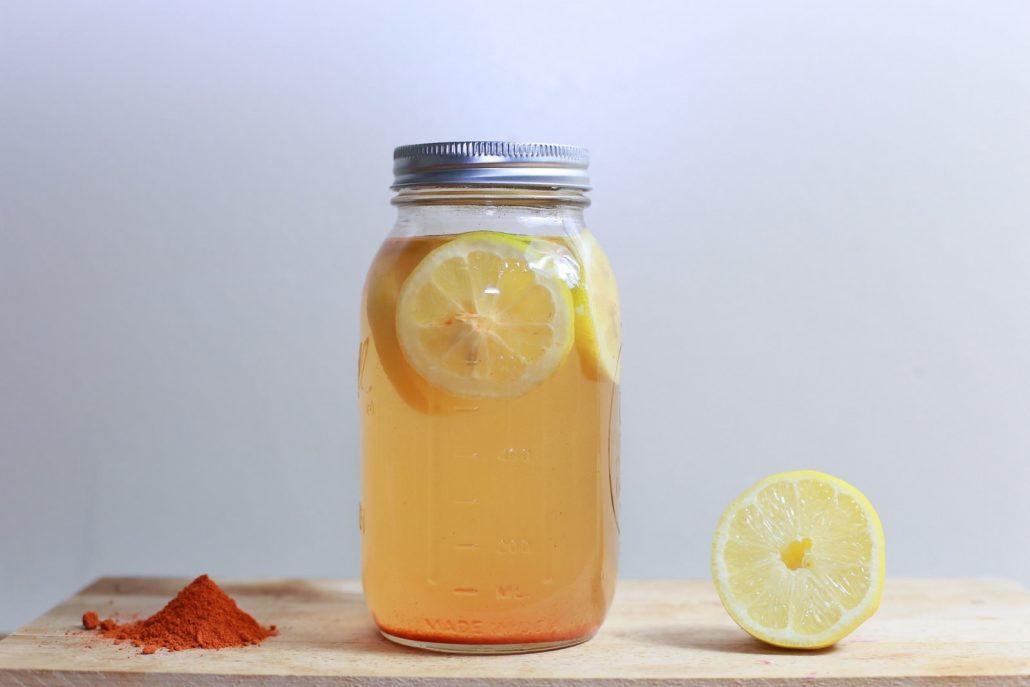
If you can stomach it first thing, a mug of hot homemade stock (bone broth) would be a good alternative. Try to drink some hydrating fluids before you have a dehydrating caffeinated drink.
Breakfast
- Scrambled eggs + ham, half an avocado. Add extra veggies like watercress or spinach.
- Or smoothie – fruit + coconut oil + coconut milk. Try adding half an avocado to your smoothie, they go well with bananas. You could also add grass-fed gelatin for extra protein.
- Fruit: half a punnet of blueberries
Lunch
- Crudités with guacamole or paleo hummus + ham/chicken/turkey
- Or any salad with
Veg
Green leaves, tomatoes, cucumber, radish, peppers, carrot
Protein
Chicken, turkey, tuna, salmon, prawns, ham, boiled eggs, smoked salmon
Fat
Avocado, olives, dressing
Dinner
- Starter: Big bowl of green salad with dressing
- Main: Spaghetti Bolognese with courgette spaghetti or paleo shepherds pie. If you do not have a julienne peeler for the courgettes you can serve the Bolognese sauce over any steamed/boiled green vegetables, I like cabbage, spring greens or broccoli and leeks.
- Half a melon
Dairy-free Smoothies – 5 minutes to prepare

Serves 2
Ingredients:
- 400 ml non-dairy milk (almond, coconut) or water
- 1 banana
- ½ avocado – optional
- 100g-200g fruit such as berries or mango. Frozen fruit works well.
- 1 tbsp. coconut oil – optional
- 1 tbsp. gelatin (Great Lakes brand – green tub) – optional
- Water or ice to achieve desired consistency
- If you have a nutribullet type blender (high power blender) you could add 1 tbsp. of seeds too
- You can also add greens like spinach but build up to this as you may not like the taste
- If you want to experiment with resistant starch you can add some green plantain to your smoothie – start out slow though, probably just a chunk about 5cm long (if you get wind or bloating you are probably not ready for resistant starch yet!)
Method:
- Simply place all of the ingredients into a blender and work until smooth. I have a Nutribullet, which is fantastic for making smoothies; a food processor also works surprisingly well.
Guacamole – lasts 1 day in the fridge

Guacamole is another dish that can be tailored to suit your own individual palette. The recipe below gives a basic, classic guacamole but feel free to change the quantities for a more or less spicy finish, or maybe change it altogether with the addition of a little tahini, lemon instead of lime or other fresh herbs like basil. You can make this the day before you want to eat it but it doesn’t last longer than one day in the fridge.
Ingredients:
- 1 avocado
- 1 fresh green chilli, chopped
- 1 lime, juiced
- 2 spring onions, chopped
- Fresh coriander, chopped (or basil)
- Sea salt & freshly ground black pepper
Method:
- Mash or blend the chillies, lime juice, spring onions, avocado and coriander until creamy.
- Season with sea salt and freshly ground black pepper.
Paleo Hummus – lasts 2-3 days in the fridge 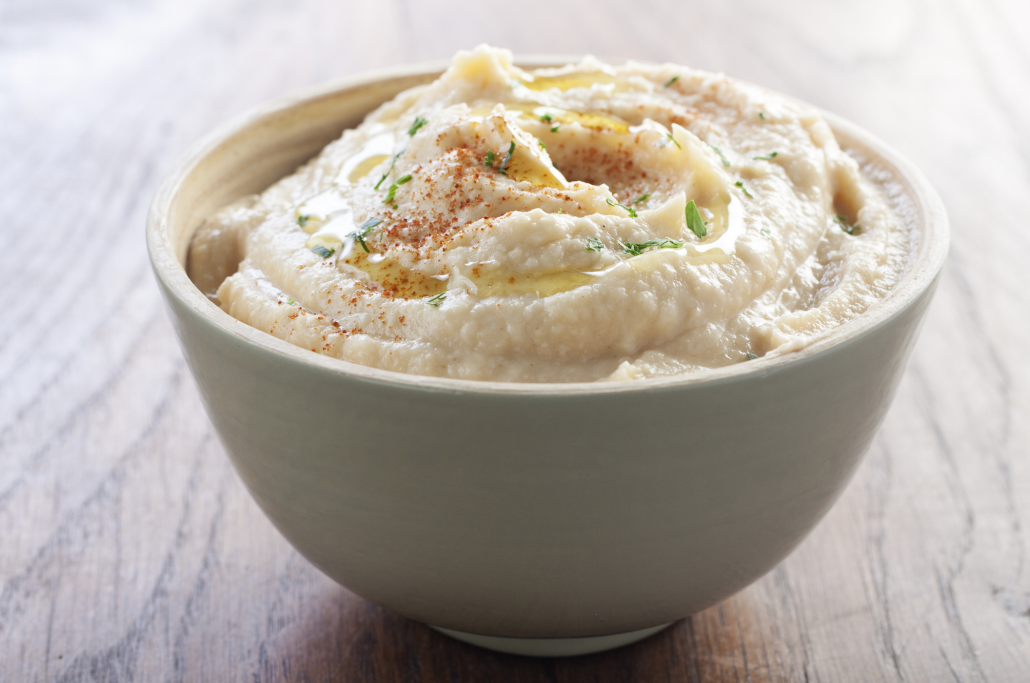
Makes 4 servings
Ingredients:
- 2 medium courgettes, peeled and chopped or 1 courgette and 50g soaked cashew nuts (nuts soaked for 6 hours and thoroughly drained)
- 4 tbsp. tahini
- 4 tbsp. olive oil
- Juice of one lemon
- 1-2 medium cloves of garlic
- 1 tsp. ground cumin
- 1 tsp. sea salt
To serve:
- Chopped fresh parsley leaves for garnish
- Paprika
- Extra virgin olive oil
Method:
- Place all ingredients except the parsley and paprika in a blender.
- Blend until smooth. The hummus will last 2-3 days in the fridge.
- Before serving: sprinkle over some fresh parsley, a pinch of paprika and drizzle with olive oil.
Stone Age Bread
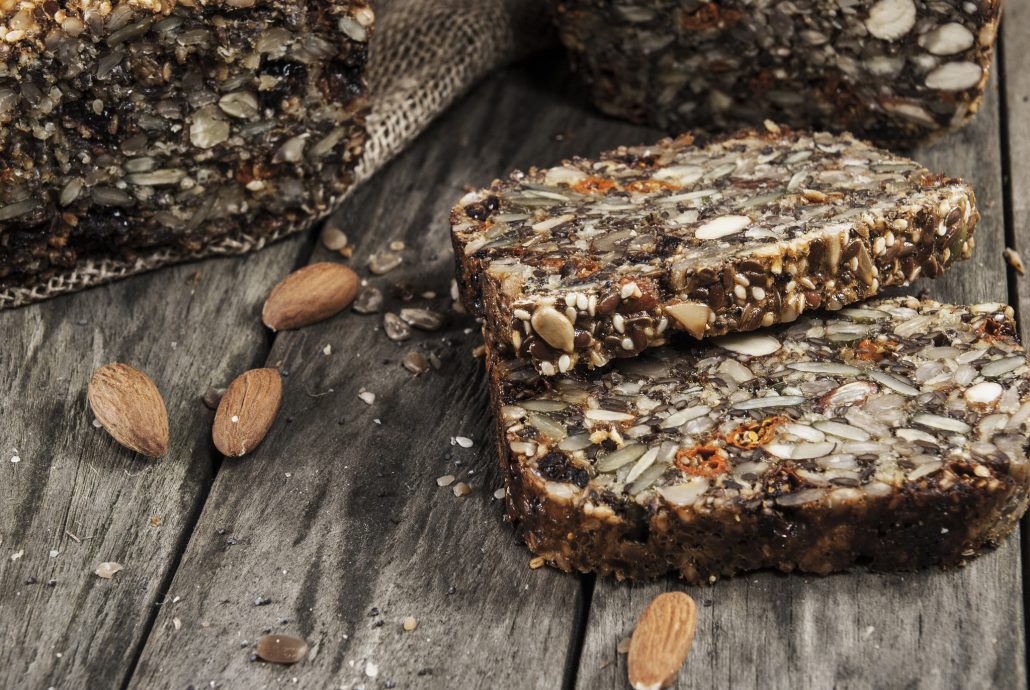
Ingredients:
- 200g mixed nuts (we use almonds, walnuts, cashews and brazil nuts)
- 400g mixed seeds (we use sunflower, pumpkin, linseed and sesame)
- 30g chia seeds
- 30g ground flaxseed
- 5 eggs
- 60 ml olive oil
- 2 tsp salt
- optional: 50g raisins or olives
- optional: 1 tsp fennel / caraway seeds
Method:
- Preheat the oven to 180 and line a 2lb loaf tin, preferably with a paper loaf tin liner but otherwise with greaseproof paper
- Beat the eggs, olive oil and salt together in a bowl. Add the remaining ingredients
- Pour the batter into the tin and press down well. Bake in the oven for 1 hour until the loaf is firm. Don’t worry if it seems oily on the top – any liquid will soak back in as it cools
- Allow the loaf to cool completely before slicing
- Store in the fridge – it will keep for around a week
Spaghetti Bolognese
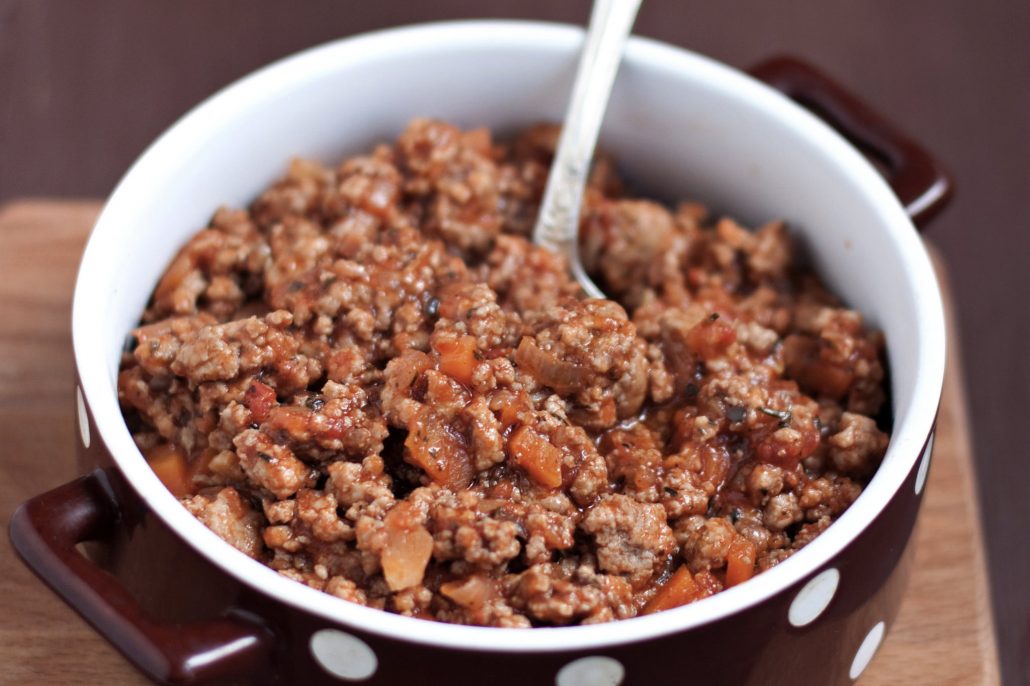
A slow-cooked Bolognese sauce is one of my absolute favourite meals. You don’t have to slow cook this, but for best results try to give the sauce at least 45 minutes. I add liver to the sauce, which once cooked, simply lends richness to it and you can’t really taste the liver. If you want to try adding the liver but are worried about the taste, start with just a small amount and build up gradually. If you have a food processor then add the livers, the bacon and the mince to the processor and pulse a few times to combine the meats. If not then finely chop the livers and the bacon by hand and mix in with the mince in the pan. To further increase the nutrients use homemade beef stock (bone broth), but if that is unavailable you can just use water.
Ingredients:
- Olive oil
- 1 onion, finely chopped
- 1 leek, finely chopped
- 2 sticks of celery, finely chopped
- 1 carrot, finely chopped
- 1-2 cloves garlic, crushed or finely chopped
- 500g grass-fed beef mince
- Optional – 2 rashers organic bacon, finely chopped
- Optional – 100g chicken or beef liver, either very finely chopped or minced
- 2 tins tomatoes
- 1 tin tomato puree
- 1 tsp. dried oregano
- 500ml beef stock (homemade if possible) or water
- Sea salt
- Freshly ground black pepper
Method:
- In a large frying pan heat the olive oil. Add the onion, leek, celery, carrot and garlic, plus a pinch of salt to stop the vegetables browning as they soften.
- Gently fry for 5-10 minutes until the vegetables have softened. Remove the vegetables from the pan and set aside. At this stage I puree the vegetables so that they are undetectable in the finished sauce (so that fussy children will eat it) but this is optional!
- Add the bacon, beef mince and livers (if using) to the pan and fry until browned. Add the vegetables back and stir to combine everything.
- Add the dried oregano to the pan followed by the tinned tomatoes, the tomato puree and the stock or water. Season with salt and pepper.
- Bring to the boil and then turn the heat right down, cover and leave to simmer for at least 45 minutes but up to 2 hours, stirring occasionally. Top up with a little extra stock/water as it cooks, if needed.
*If you have a slow cooker you could transfer the mixture to a slow cooker now and leave on low for up to 8 hours, which will create wonderfully tender meat. You will not need as much stock if you are using the slow cooker as the liquid doesn’t boil away, so only add enough stock to loosen the mixture.
*If you have an Instant Pot pressure cooker this will be beautifully tender after 30 minutes in the Instant Pot
Courgette spaghetti – 5 minutes to prepare (if you skip the salting step)
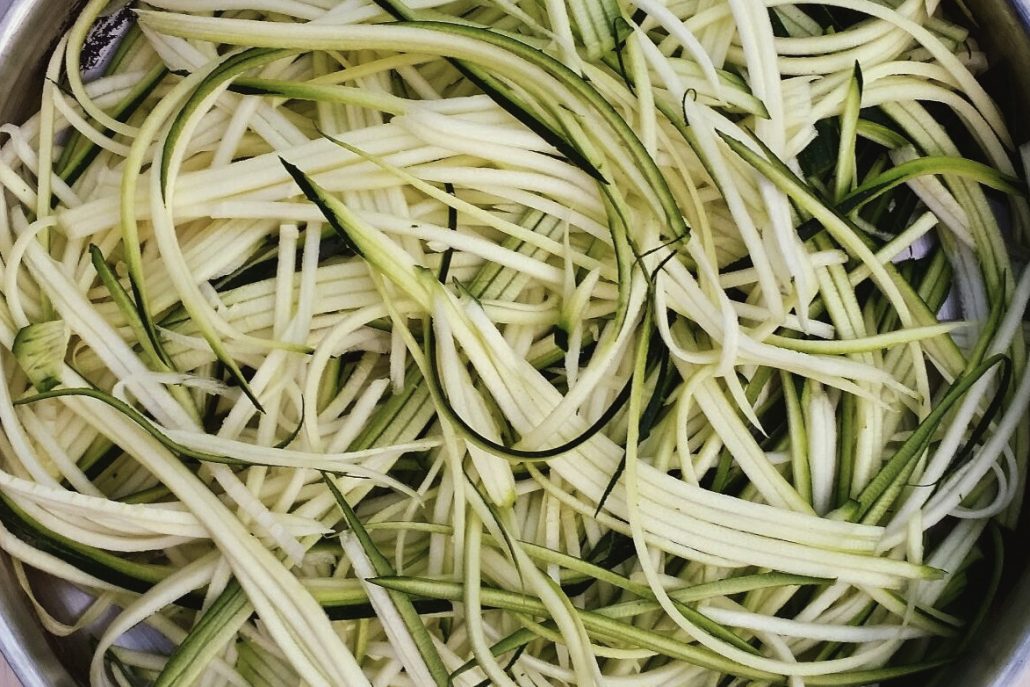
Equipment needed: Julienne Peeler
Ingredients:
- 1-2 large courgettes per person
Method:
- Using a julienne peeler, julienne the courgettes. Once you get down to the middle you can discard the courgette as the middle bit makes the spaghetti a bit watery.
- You can cook the courgettes straight away or you can let them stand with salt as follows to remove some of the water: toss the courgettes with salt and put into a colander or sieve over a bowl for half an hour to remove some of the water. After half an hour, pat dry with kitchen paper.
- In a dry frying pan with no oil, fry the courgettes for 2-3 minutes. Do not cook them too long as they lose their pasta-type texture.
- Add a drizzle of olive oil and stir through the courgettes for another 30 seconds.
- Serve under Bolognese sauce instead of pasta.
*To have courgette spaghetti on it’s own: In a tablespoon of olive oil fry a crushed clove of garlic and a little chopped red chilli, then remove from the pan. Cook the courgettes as above then stir the garlic and chilli through the courgettes with some chopped fresh parsley and salt and pepper.
